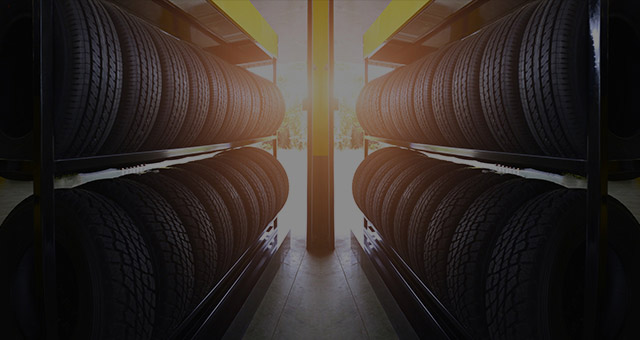Tire Solution: Recognizing Tire Stress Surveillance Systems
Recognizing Tire Pressure Monitoring Systems (TPMS) is an important element of maintaining optimal vehicle efficiency and safety on the road. With advancements in vehicle innovation, TPMS has come to be a typical attribute in modern-day automobiles, offering real-time information on tire stress levels. Digging deeper right into the ins and outs of TPMS, one can uncover the numerous parts that compose this system and the significance of each in ensuring exact monitoring. From straight to indirect TPMS systems, the landscape of tire stress tracking is diverse, each with its one-of-a-kind collection of factors to consider and benefits. Keep tuned to decipher the intricacies of TPMS, from maintenance pointers to the undeniable benefits of keeping your tires effectively pumped up. tires morris il.

Relevance of TPMS
The relevance of Tire Stress Monitoring Solutions (TPMS) exists in their capacity to boost vehicle security and performance through real-time tracking of tire stress degrees. Preserving the appropriate tire stress is critical for making sure ideal handling, stopping, and general security of a vehicle. TPMS offers chauffeurs with instant comments on any type of overinflated or underinflated tires, enabling timely modifications to be made.
Elements of TPMS
Making up numerous necessary elements, a Tire Stress Surveillance System (TPMS) works as an advanced security attribute in contemporary vehicles. The major components of a TPMS include sensing units, a control module, and a caution indicator. Sensors are usually located in the tire shutoff stem or affixed to the wheel setting up, where they measure tire pressure and send data to the control component. The control module procedures this information and causes a warning if it detects substantially low stress in any one of the tires. The caution indicator, usually a sign on the dashboard, alerts the vehicle driver to check the damaged tire or tires. Some progressed TPMS models likewise present the actual tire pressure readings for every tire, supplying motorists with real-time details to guarantee optimum tire performance and safety. By keeping an eye on tire pressure continually, TPMS helps avoid mishaps, lowers tire wear, and improves fuel efficiency, making it a critical component for car safety and security and efficiency.
Sorts Of TPMS

On the various other hand, indirect TPMS counts on the vehicle's wheel rate sensing units to monitor tire pressure. This system discovers underinflation by contrasting the rotational rates of the wheels. Indirect TPMS is less expensive than straight TPMS, as it uses existing sensing units within the car.
While straight TPMS supplies more exact analyses, indirect TPMS is less complex in layout and commonly requires less upkeep. Both systems have their constraints and benefits, and the option between them typically relies on elements such as price, vehicle make, moved here and individual choice. Comprehending the differences between these 2 types of TPMS can help car owners make educated decisions pertaining to tire maintenance and security.
TPMS Maintenance Tips
Conduct regular checks on the tire stress degrees and contrast them with the TPMS readings to guarantee they are constant. During tire rotation or replacement, make certain that the TPMS components are managed carefully to stop any possible damages. If the TPMS warning light illuminates discover this on the dashboard, resolve the problem promptly by examining the tire pressures and the overall system for any type of faults.
Advantages of Correct Tire Stress
Maintaining correct tire pressure, as highlighted in TPMS Upkeep Tips, is important for gaining the many benefits linked with optimum tire stress degrees. Furthermore, proper tire stress ensures even tire wear, prolonging the life expectancy of the tires and promoting more secure driving problems. In conclusion, the benefits of appropriate tire stress go past simply tire longevity; they encompass improved fuel effectiveness, enhanced safety, much better lorry performance, and overall driving convenience.
Conclusion
In verdict, understanding tire pressure surveillance systems (TPMS) is important for maintaining ideal tire stress and guaranteeing automobile security. By acknowledging the significance of TPMS, being acquainted with its components, knowing the various kinds offered, sticking to correct upkeep pointers, and understanding the advantages of keeping proper tire pressure, drivers can improve their driving experience and extend the lifespan of their tires. Appropriate tire stress is vital to effective and secure lorry operation.

Comments on “Enjoy Big Cost Savings on Discount Tires Morris IL: Shop Currently for Offers”